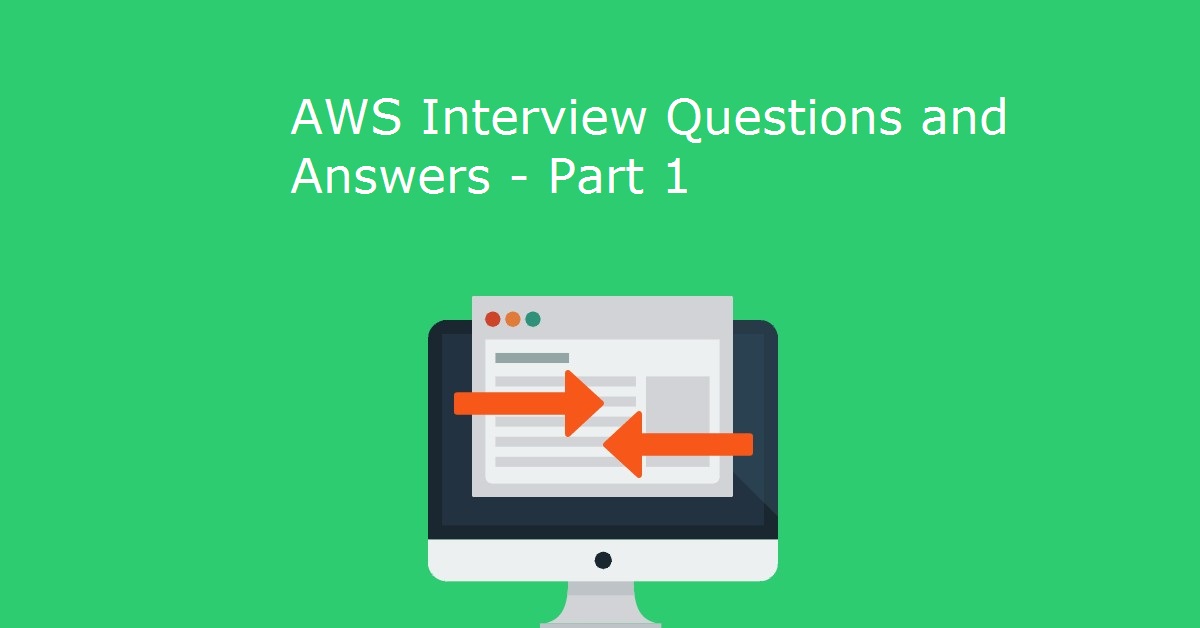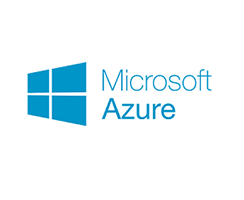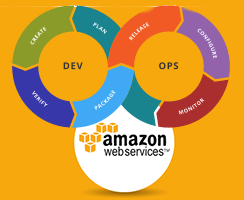
Learn about AWS Solutions Architect Associate Interview Questions
Question 1
Imagine you are a Solutions Architect and you are developing a document sharing application. Your application requires a storage layer. The storage layer should furnish routine support for versioning. This helps the users to restore a deleted account or roll back to an earlier version. Which AWS service would you choose to fulfill the required task?
Answer
Amazon S3 – Amazon S3 is the most appropriate storage layer for document storage and various other types of objects.
Amazon S3 – Amazon S3 is the most appropriate storage layer for document storage and various other types of objects.
Question 2
There is a running application in us-west-2 which requires six EC2 instances running continuously. The region has 3 Availability Zones. They include us-west-2a, us-west-2b and, us-west-2c. If an Availability Zone in us-west-2 becomes unavailable, which two deployments provide fault tolerance?
Answer : 6 EC2 instances in us-west-2a, 6 EC2 instances in us-west-2b and, 0 EC2 instances in us-west-2c.
3 EC2 instances in us-west-2a, 3 EC2 instances in us-west-2b and, 3 EC2 instances in us-west-2c.
3 EC2 instances in us-west-2a, 3 EC2 instances in us-west-2b and, 3 EC2 instances in us-west-2c.
Question 3
A manufacturing site uses an application to upload files. The size of each uploaded file is 3 GB. These files are processed to obtain metadata at the rate of a few seconds per file. There are no certain timings followed to upload the files. For example, there might not be a single update for hours followed by updating several files simultaneously. What architecture solves this task most cost-effectively?
Answer :
We have to store the file in an S3 bucket. Then we need to use Amazon S3 event notification to apply a Lambda function for file processing.
We have to store the file in an S3 bucket. Then we need to use Amazon S3 event notification to apply a Lambda function for file processing.
Question 4
An enterprise is in the process of migrating an on-premises 10TB MySQL database to Amazon Web Services (AWS). The enterprise requires the replica lag time to be lesser than 100 milliseconds. The company wants the database to quadruple in size. Which Amazon RDS engine will perform this task properly?
Answer : According to AWS Documentation, we can use AWS Aurora to meet the above requirements.
Question 5
The following are examples of different workloads.
(1) A web application that uses Amazon RDS.
(2) A static website.
(3) A management task which runs one time every night.
(4) A long-running worker process.
(5) An Enterprise Data Warehouse.
The Solutions Architect must consider using Elastic Beanstalk for two of the above-mentioned workloads. Which two are they?
Answer :(1)A web application that uses Amazon RDS.
(4)A long-running worker process.
(4)A long-running worker process.
Question 6
A web application has a 150 GB relational database. It is running on an EC2 instance. The application is used occasionally with tiny peaks in the evenings and afternoons. Mention the most cost-effective storage type which you should use.
Answer :
The most cost-effective storage type to use in this scenario is Amazon EBS General Purpose SSD.
The most cost-effective storage type to use in this scenario is Amazon EBS General Purpose SSD.
Question 7
There is a highly available application in AWS. An administrator runs this application. The administrator needs a file storage layer which can share between instances and at the same time scale the platform more effectively. Which AWS service should the administrator use to perform this task?
Answer : According to the AWS Documentation, we can use Amazon EFS to perform this action.
Question 8
An enterprise is planning to run a service on AWS. This service is going to provide offsite backups on phones and laptops for images. The solution should be capable of supporting millions of consumers. Each consumer will have thousands of images. Although the images are going to be retrieved occasionally, the option for immediate retrieval should be there. Which cost-effective storage version would you use in this case?
Answer :
We have to use the Amazon S3 Standard Infrequent Access.
We have to use the Amazon S3 Standard Infrequent Access.
Question 9
A Solutions Architect is in the process of designing a solution which stores and archives business documents. He has assessed and determined that Amazon Glacier would be the apt solution. The only catch is that, within 10 minutes of a retrieval request, the data must be delivered. Which Amazon Glacier feature will satisfy the above requirement?
Answer
We have to use the Expedited Retrieval feature in Amazon Glacier.
We have to use the Expedited Retrieval feature in Amazon Glacier.
Question 10
There is a data processing application in AWS. The job of that application is to retrieve data from an internet service. The Solutions Architect has to design a widely available solution. This solution will help in assessing this data without causing any sort of bandwidth constraints on the application traffic. Which Solution would you choose?
Answer :According to the AWS Documentation, we have to attach an internet gateway and then add routes for 0.0.0.0/0
Question 11
You are in the process of analyzing the Auto Scaling events for your application. While reviewing, you realize that the application is scaling up and down numerous times within the same hour. Your task is to optimize expenses while maintaining elasticity. What design choices would you follow?
Answer :We have to modify the Auto Scaling group cooldown timers. After that, we have to modify the CloudWatch alarm period that generates your Auto Scaling scale down policy.
Question 12
An enterprise is hosting a prominent web application. This application is connected to an Amazon RDS MySQL DB instance. This instance is running in a private VPC subnet. The subnet was developed using default ACL settings. Only the consumers on an SSL connection is entitled to access the web servers. We have to also note that the database should only be accessible to web servers in a subnet which is public. Your task is to mention two solutions which satisfy the above conditions. Make sure your choices do not impact the normal running of other applications.
Answer : We have to create a Web Server Security group. This group must allow HTTPS port 443 inbound traffic from everywhere (0.0.0.0/0). We then have to apply it to the Web Servers. We then create a Database Server security group. The group must allow MySQL port 3306 inbound. We also have to mention the source as the Web Server security group.
Question 13
The primary task of an application is to read and write objects to an S3 bucket. After deploying the application the architect realizes that the read/write traffic is very steep. What must the architect do in order to maximize the performance of the Amazon S3?
Answer :We have to prefix each and every object name with a hex hash key in addition to the current data.
Question 14
Imagine you are about to deploy a web application on Amazon EC2. This application must call AWS APIs. What method would you choose to safely pass credentials to the web application?
Answer :We have to assign IAM roles to the EC2 instances.
Question 15
There is a website which is running on EC2 Instances at the back of an ELB Application Load Balancer. The instances are running in an Auto Scaling Group spanning numerous Availability Zones. It is delivering numerous big files, which are kept on a shared Amazon EFS file system. Every time a user demands these digital assets, the enterprise needs to avoid delivering the files from EC2 Instances. The user experience of the website needs to improve. What should the company do?
Answer : According to the AWS Documentation, we have to cache static content using AWS CloudFront.
Question 16
A Solutions Architect is in the process of designing a system. This system is highly scalable and is utilized to track records. The option to immediately download these records must remain available for up to 3 months. After 3 months these records must undergo deletion. What is the most appropriate decision to take in this use case?
Answer :We have to first store the files in Amazon S3. After that, we need to create a Lifecycle Policy to remove the files after 3 months.
Question 17
A consulting enterprise uses various AWS resources from numerous AWS services which include, Amazon VPC, DynamoDB, IAM, Amazon RDS and, Amazon EC2. They are continuously building large architectures for their consumers. The architecture blueprints are ready in the form of diagrams but the enterprise is not able to use these diagrams to automatically create their resources. What service should the company choose to help in this scenario?
Answer : The enterprise should choose the AWS CloudFormation service.
Question 18
The security policy of a business organization needs a web application to encrypt data before writing to the disk. Which solution is best suited to handle the above-mentioned requirement?
Answer : According to the AWS Documentation, the enterprise should choose the AWS Key Management Service {AWS KMS) API solution.
Question 19
Imagine an application is currently storing its entire data on Amazon EBS Volumes. We must make sure to back up all EBS volumes properly, spanning numerous Availability Zones. What is the strongest way to backup the volumes?
Answer :We have to take continuous snapshots of EBS.
Question 20
Imagine there is a retailer. He exports data every day from its transactional databases into an S3 bucket located at Sydney. The Data Warehousing team of the retailer is keen on importing this data into a former Amazon Redshift cluster in their VPC, located at Sydney. The Corporate Security Policy of the enterprise states that the data can only be transferred within a VPC. What 2 steps would you undertake to satisfy the security policy?
Answer : We have to first enable Amazon Redshift Enhanced VPC Routing. After that, we have to create and configure an Amazon S3 VPC endpoint.
Question 21
A team is in the process of building an application. This application should persist and index JSON data in a widely available data store. There is high application traffic. Although the traffic is high the latency of data access should be steady. The team has to choose a service to satisfy the above condition. Which service is it?
Answer : According to the AWS Documentation, the team should choose the Amazon DynamoDB service.
Question 22
An enterprise is currently hosting a multi-language website on AWS. This website is served using CloudFront. The language is mentioned in the HTTP request as stated below.
http://d11111f8.cloudfront.net/main.html?language=de
http://d11111f8.cloudfront.net/main.html?language=en
http://d11111f8.cloudfront.net/main.html?language=es
We need to configure AWS CloudFront to deliver cached data in the right language. How would you configure AWS CloudFront?
Answer : We have to configure AWS CloudFront based on query string parameters.
Question 23
A Solutions Architect is in the process of designing a web page. It will be used primarily for registration of events. The architect requires a managed service to dispatch a text message every time a user signs up for an event. State the best AWS service which the architect can use.
Answer : According to the AWS documentation, the architect should use the Amazon SNS service.
Question 24
A Solutions Architect is given the responsibility of designing a shared service on Amazon ECS. This service will host containers from numerous consumers. These containers are using many AWS services. A container belonging to one consumer must not access data from another consumer. Mention the best solution for the architect to achieve the desired result.
Answer :According to the AWS documentation, the architect should use the IAM roles for tasks solution.
Question 25
There is an enterprise which generates large datasets. There are millions of rows which need to be summarized column-wise. The company uses pre-existing business intelligence tools to create daily reports from these datasets. According to you, which storage service is best suited for the above-mentioned requirement?
Answer : According to the AWS Documentation, the company needs to use Amazon Redshift storage service.




